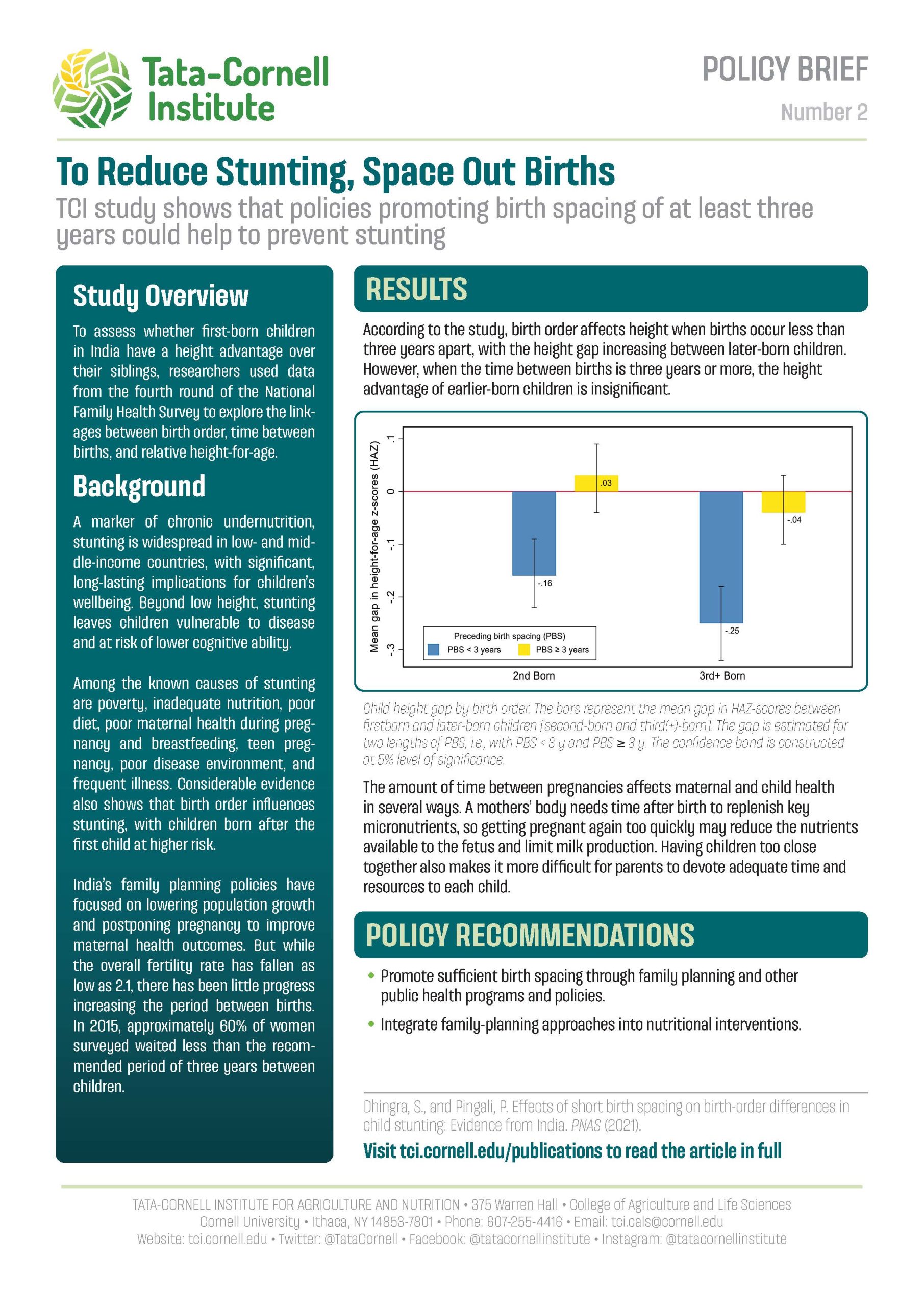Effects of Short Birth Spacing on Birth-Order Differences in Child Stunting: Evidence from India
Abstract

Read a policy brief based on this study.
Do firstborn children have a height advantage? Empirical findings have found mostly that, yes, second or higher-order children often lag behind firstborns in height outcomes, especially in developing countries. However, empirical investigations of birth-order effects on child height overlook the potential impact that birth spacing can have. We provide an explanation for the negative birth-order effect on stunting outcomes for young Indian children and show it is driven by short preceding-birth spacing. We find that firstborn children are taller than children of higher birth order: The height-for-age gap for third (or higher)-order children is twice the gap for children second in birth order. However, this pattern is observed when spacing between later-born children and their immediate elder siblings is fewer than 3 y. Interestingly, the firstborn height advantage disappears when later-born children are born at least 3 y after their elder siblings. Thus, our findings indicate that spacing length between children explains differences in height, over birth order. Although India’s family planning policy has resulted in a substantial reduction in total fertility, its achievement in spacing subsequent births has been less impressive. In showing that spacing can alleviate or aggravate birth-order effects on attained height, our study fills an evidence gap: Reducing fertility alone may not be sufficient in overcoming negative birth-order effects. To reduce the detrimental effects of birth order on child stunting, policy responses—and therefore research priorities—require a stronger focus on increasing the time period between births.

